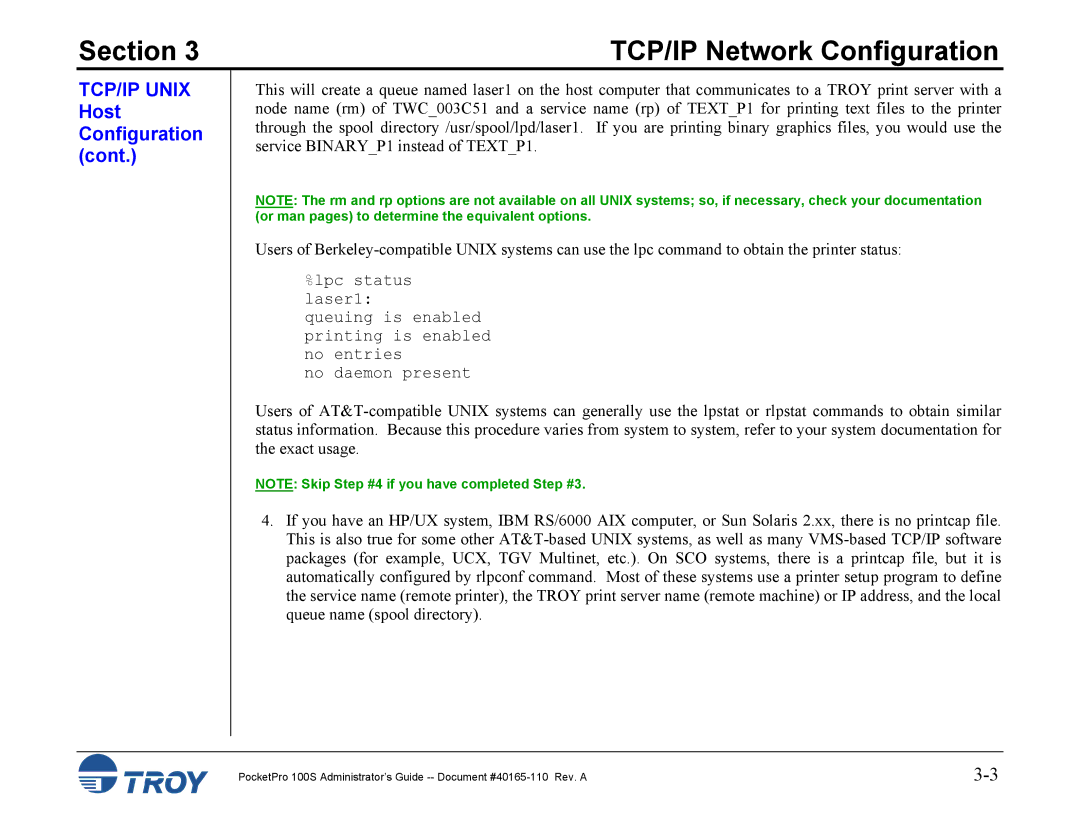
Section 3 | TCP/IP Network Configuration |
TCP/IP UNIX Host Configuration (cont.)
This will create a queue named laser1 on the host computer that communicates to a TROY print server with a node name (rm) of TWC_003C51 and a service name (rp) of TEXT_P1 for printing text files to the printer through the spool directory /usr/spool/lpd/laser1. If you are printing binary graphics files, you would use the service BINARY_P1 instead of TEXT_P1.
NOTE: The rm and rp options are not available on all UNIX systems; so, if necessary, check your documentation (or man pages) to determine the equivalent options.
Users of
%lpc status laser1:
queuing is enabled printing is enabled no entries
no daemon present
Users of
NOTE: Skip Step #4 if you have completed Step #3.
4.If you have an HP/UX system, IBM RS/6000 AIX computer, or Sun Solaris 2.xx, there is no printcap file. This is also true for some other
PocketPro 100S Administrator’s Guide |
